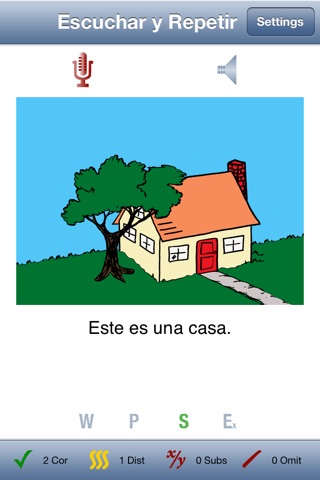
Escuchar y Repetir
This app uses a phonological approach to remediating speech that is adapted from the ideas of Hodson and Paden and based on the unique features of the Spanish Phonological System. The program focuses on target patterns rather than target phonemes. One pattern is targeted for a limited time—two to four weeks—then the next pattern is targeted. Hodson and Paden called this method of introducing patterns a “cycle”. Patterns include: Consonant Sequences, Liquid Singletons, Postvocalic Consonant Singletons, Prevocalic Consonant Singletons. Within these patterns, specific phonemes are targeted. Target sounds and sentences are recorded by a bilingual Speech-Language Pathologist.
The phonological patterns included in this app were selected as a result of careful consideration of information from four primary sources: (1) the available literature on phonological development in various Spanish-speaking populations (Goldstein, 1995); (2) our own clinical experience as well as that of our students and colleagues who have worked with many Spanish-speaking children with speech delays; (3) the characteristics of the Spanish language itself, in terms of the frequency of occurrence of sounds and patterns; and (4) the recent recommendations of experts in the field regarding the selection of intervention targets when working with bilingual children (Yavas & Goldstein, 1998). The cumulative information from each of these four sources led to the inclusion of five broad categories of phonological patterns as well as eighteen subcategories on the Spanish Phonology CD: Consonant Sequences, Liquid Singletons, Postvocalic Consonant Singletons, Prevocalic Consonant Singletons. Four of these categories are included in this app—syllables are omitted. The skilled professional will be able to choose from these patterns to design an instructional program that is tailored to the needs of each child.
This task is the basis for phonology therapy. It includes the often necessary step of separating the target sound from the rest of the word. In this way, the error sound can be eliminated from the habitual motor sequence. While playing Word Practice, the child must process auditory information at the sound, syllable, phrase, and sentence levels with imitative or spontaneous expressive phonological production.



